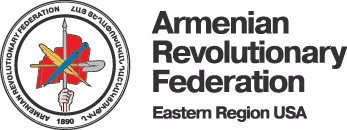AMA and ‘Facing History’ to Commemorate Women Affected by Genocide
WATERTOWN, Mass.—On Sun., April 10, the Armenian Museum of America, along with Facing History and Ourselves, will present a genocide commemoration program titled, “Past and Present: Commemorating Women Affected By Genocide,” that honors all women—across history and around the world—who have been affected by the destruction of genocide.
This year’s joint commemoration will feature a lecture by Anna Aleksanyan of Clark University, as well as survivor testimonies from Bosnian Genocide survivor Edina Skaljic and Rwandan Genocide survivor Chantal Kayitesi.
The program will also feature musical performances by violinist Armen Ghazaryan and pianist Levon Hovsepian, as well as a special blended poetic musical piece with poetry written and performed by Frank Cunningham.
To coincide with the program, there will also be a number of guest exhibitions created and inspired by women who have experienced genocide; these include “Kindling” by Sandy Smith-Garcés, “Pax Rwanda: Embroideries of the Women of Savane Rutongo-Kabuye,” curated by Juliana Meehan and Rutongo Embroideries, and “Every Stitch a Memory” by Netty Vanderpol.
All of these guest exhibitions, along with the museum’s own “Stitching to Survive” and Traveling Genocide exhibits, will be available for viewing on the 3rd floor of the museum, in the Adele & Haig Der Manuelian and Terjenian-Thomas Galleries, 65 Main St., in Watertown.
The event is free and open to the public. Refreshments will be served after the formal program.
The keynote speaker, Anna Aleksanyan, is a Harry and Ovsanna Chitjian Fellow and a doctoral student in Armenian Genocide studies at the Strassler Center for Holocaust and Genocide Studies at Clark. Her research delves into the physical and non-physical destructive techniques used against women during the Armenian Genocide.
Sandy Smith-Garcés’ “Kindling” exhibit was inspired by the plight of Darfuri women, driven from their homes and living in refugee camps in eastern Chad. Smith-Garcés was struck by the divide between the lives of mothers in her own community and the lives of mothers working to provide for their families in the camps, where basic needs are scarce. Venturing outside the camps in search of kindling to cook meals often ends in rape and other forms of violence. The search for firewood takes on new meaning—as essential for survival as the quest for fire, food, and shelter from the elements since time immemorial.
The “Pax Rwanda Embroideries” are a traveling exhibit owned and curated by Juliana Meehan, a New Jersey educator who supports the Savane Rutongo-Kabuye embroidery workshop. This workshop was created by a group of Rwandan women living in the aftermath of the 1994 genocide against the Tutsis. They came from both sides of the conflict, yet they put events of the past behind them to work together in the hope that their children would have a better future.
Savane Rutongo-Kabuye and Christiane Rwagatare, the founder and creative director of the workshop, have won awards for their work in Rwanda, and their embroideries are displayed in the national Rwesero Art Museum at Nyanza. The workshop is one of many collectives of artisans that reflect a larger phenomenon taking place all over Rwanda: reconstruction, reconciliation, and the desire for peace.
Netty Vanderpol is a Holocaust survivor from Holland and was a classmate of Anne Frank’s in Amsterdam. Forty years after she escaped with her family from the Theresienstadt concentration camp in what is now the Czech Republic, Vanderpol took up the art of needlepoint. She has used this art form as the vehicle to tell the story of how she and her family survived the Holocaust.
Source: Armenian Weekly Mid-West
